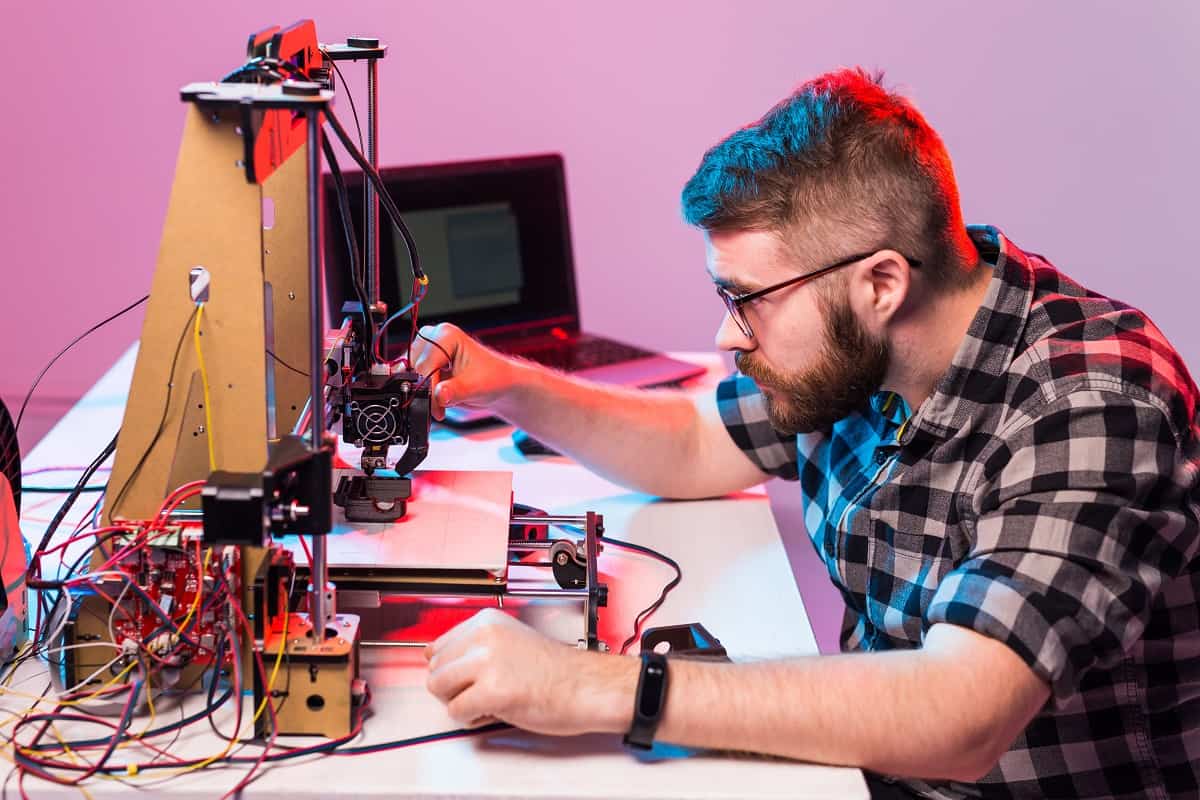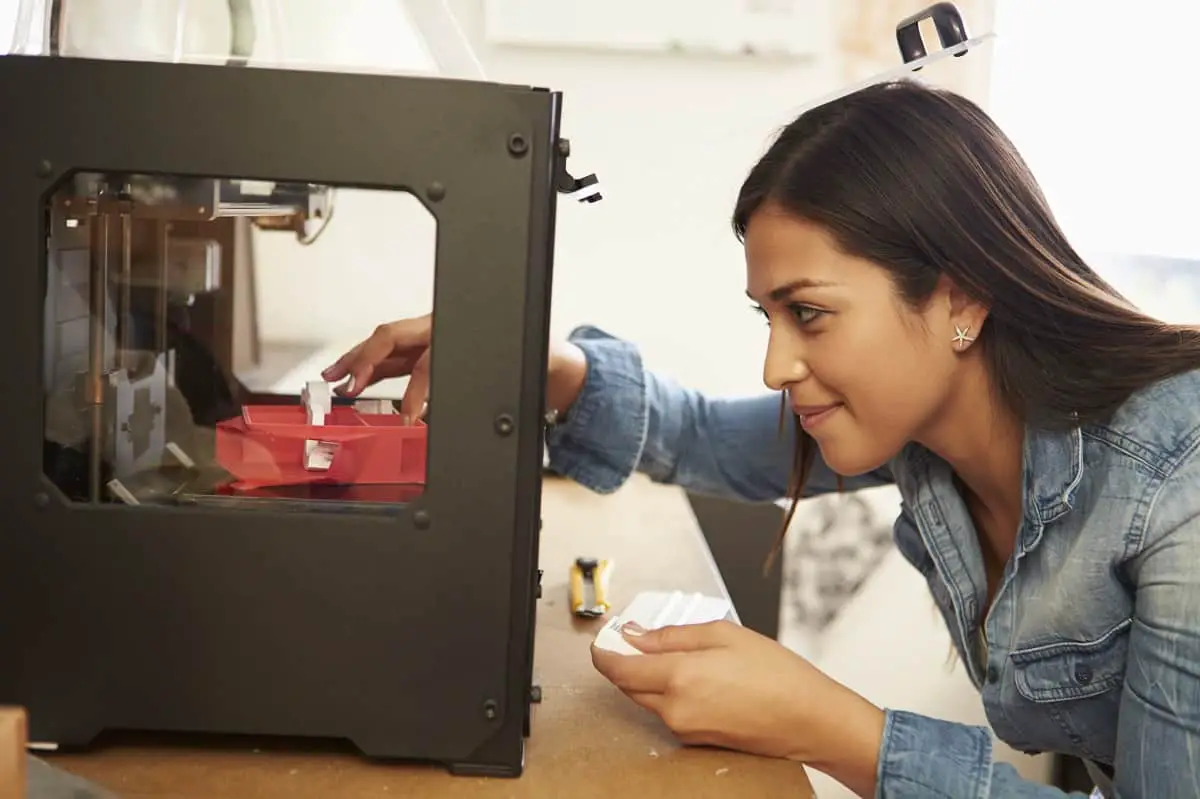The technology behind 3D printers is some of the most advanced that has ever been created. They make use of three-dimensional digital mapping to create some unbelievably complex objects. These phenomenal devices can be used in a vast array of settings, from simple at-home applications to printing food, to industrial manufacturing.
They are very complex machines that require some very specific maintenance, including how to level a 3D printer bed. Let’s go over how to do that.
A Run Down of a 3D Printer’s Printing Bed
The print bed is the surface of a 3D printer that the print nozzles lays the printing material onto to create the three-dimensional object. 3D printers require this bed to be flat and level so that they may successfully produce layers of filament that are used to make up the object.
Standard printing beds are usually made from aluminum, glass, or plastic, and are sometimes lined with an adhesive to improve the results of the overall print. This adhesive can be any sort of commercial product like blue painter’s tape or even a glue stick.
There are two main aspects that influence the quality of the 3D object significantly, namely adhesion, and the print release once it has cooled. Most 3D printer owners like to experiment with different printing materials and media to perfect their printing methods.
The adhesion of your 3D printer’s printing bed influences the stability of the first layer of the object you are printing and therefore has a massive impact on the accuracy of the print as a whole. If the first layer shifts in any way, the entire print will be affected.
Heated printing beds prevent the issue of warping by keeping the bottom layers of the print warm enough so that when the print is done, every layer of the object can cool at the same time, leaving an even finish.

How to Level The Print Bed
Leveling the bed of your 3D printer is not as difficult as it may sound, but it is necessary if you want a stable foundation for your prints. Before you begin leveling the print bed, you will need to do some preparation.
Start by cleaning the nozzle. If there is even a little bit of printing medium left in the nozzle, the alignment of the printer bed will be off. Heat the nozzle to the melting temperature of your material and wipe it away. It’s as simple as that.
Your 3D printing bed also needs to be clean, just like the nozzle, or at least free of dirt and debris that may otherwise alter the density of your printing bed.
Most 3D printers feature semi-automatic or automatic bed leveling, but leveling the bed manually can be more beneficial to your future prints. Start by getting an index card, usually found in an office supply store or lying around your home.
Adjust the adjustable screws found along the sides of the build plate or at its corners so that the distance between the build plate and the nozzle is increased. Then move the build plate and the nozzle closer, either by hand or using your printer’s computer software.
Now it’s time to measure and adjust. You will need to calibrate the printing bed to that it is as level as it possibly can be in the middle and all four corners. Start at each corner and move the print head there, then place the index card between the bed and the nozzle.
If you do not feel any resistance when dragging the card back and forth between the two, adjust the screw closest to that corner to close the gap. Try not to place any amount of pressure on the print bed while you do this, or you could end up misaligning it.
Do this for each corner, and then set the nozzle gap, as it will have changed during the bed-leveling process.
Which Material Should You Use When 3D Printing?
There are many different materials that can be used for 3D printing, all that have different printing temperatures and yield different results. Most folks who have a 3D printer prefer to use thermoplastics because it is inexpensive and easy to get your hands on.
ABS is also one of the most popular materials used when 3D printing, and is the same material that is used to make LEGO bricks. It is also very affordable, lightweight, and durable.
Another trendy material is PLA, which is a derivative of cornstarch, meaning that it is also biodegradable. This is the material that is favored by those who are looking to reduce their carbon footprint.
Final Thoughts
Knowing how to level a 3D printer bed is not as challenging as it seems, it is still one of the most important things to do when maintaining your printer, as it can completely alter the outcome of your final prints. Follow the steps mentioned above, and you’ll be printing like a pro in no time.


